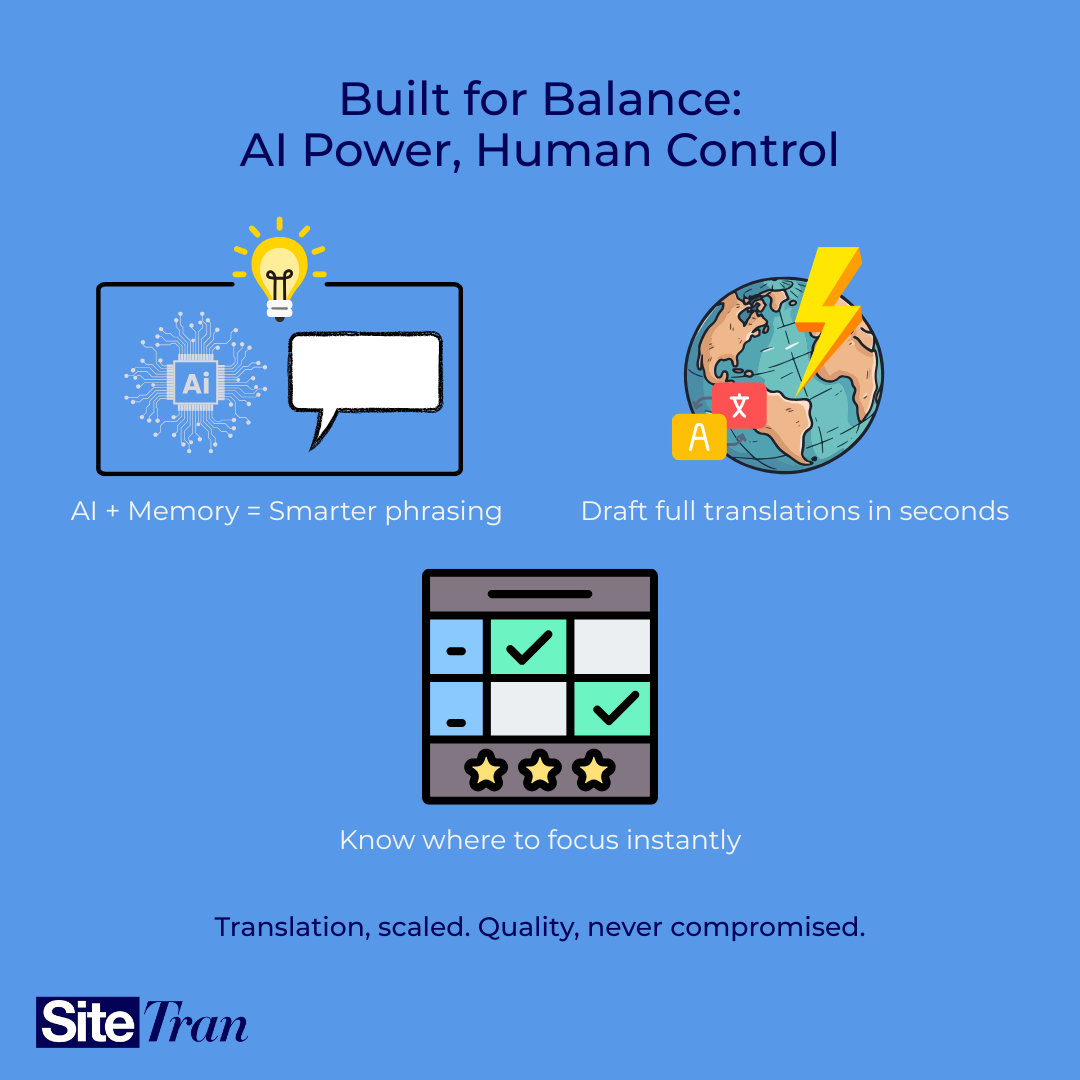It’s the question that’s on every translator’s mind, and if we’re honest, on the minds of engineers, analysts, copywriters, and designers too.
With AI improving at breakneck speed, it’s fair to ask: Is there a future for human translators, or will machines take over entirely?
Let’s break it down.
The Rise of AI Translation
AI translation isn’t just “getting there.” In many cases, it’s already here.
Companies like Google Translate, DeepL, Microsoft Translator, and Amazon Translate are offering increasingly sophisticated language models powered by neural machine translation (NMT). More recently, tools like OpenAI’s GPT-4o, Meta’s SeamlessM4T, and Mistral are pushing the boundary even further. These systems don’t just swap words from one language to another. They understand context, tone, formality, and structure in real time across dozens of languages.
And the best part? They’re learning and improving with every dataset, correction, and feedback loop they get. The more they’re used, the better they get. This wasn’t the case 10 years ago.
From Phrase Tables to Neural Nets: A Major Leap Forward
Let’s not forget what came before. Older machine translation systems like rule-based or statistical machine translation (SMT) models were limited and clunky. They translated sentence fragments in isolation, often word for word, with little sense of nuance.
The difference between those models and modern AI-driven NMT is massive:
- NMT uses entire sentence context for smarter predictions
- AI models learn from millions of human translations, real-time corrections, and fine-tuned industry data
- They adapt to tone and grammatical structure far more effectively
In short, we’ve moved from translating like a robot to translating like a well-read intern with lightning-fast reflexes.
So... Are Human Translators Still Needed?
This is the heart of the matter.
If machines can translate and are only getting better, are humans still relevant?
Yes. But maybe not in the same way.
Zooming Out: AI and the Bigger Picture
This isn’t just a translation issue. AI is writing content, generating UI designs, automating workflows, and surfacing data insights. It’s reshaping how work gets done in many technical fields.
Software engineers aren’t obsolete, but now they’re paired with GitHub Copilot. Analysts aren’t replaced, but tools like ChatGPT and Code Interpreter let them move faster. Designers still design, but AI helps generate layouts, typography, and wireframes in seconds.
The same shift is happening in translation. Human translators are evolving into reviewers, localizers, and cultural guides. These are roles that machines can’t replicate at the same depth.
Translation vs. Localization: The Human Factor
From our experience at SiteTran, one thing is abundantly clear: translation is not always the same as localization.
Getting the words right is one thing. Getting the feeling right is something else entirely.
If you want to deliver technical instructions or documentation, AI will probably do the job just fine.
But if your goal is to make a user feel like your website was built for them, in their language, with their industry terms, cultural references, and regional phrasing, you’ll need human finesse.
The difference is subtle, but powerful:
- AI may say “Submit the form”
- A human may know that in a local market, it should say “Get started now” to drive engagement
So What’s the Best Approach? Mix the Two.
Here’s the truth: it’s not about resisting AI. It’s about reframing how the work is done.
We believe in a hybrid model.
- Start with AI to scale fast, save money, and get a first draft that’s already 80% there
- Then proofread, localize, and polish with human translators to ensure your content truly connects
- For small businesses, this combo makes localization accessible where it otherwise wouldn’t be affordable
- For enterprises, it makes scale and quality finally possible together
At SiteTran, We Embrace AI But We Build for Humans Too
Our entire platform is built around this hybrid philosophy. We help businesses harness the power of AI without losing control of quality.
- Our Translation Suggestions feature leverages both AI models and your existing translation memory to recommend smart phrasing
- We offer a one-click AI translation option after scraping your website, so you can instantly generate a full draft in multiple languages without copying and pasting content manually
- And now, we’ve launched an AI Review Tool that scores your translations using AI itself, so you know where to focus your efforts

Final Thought
Will AI make translators obsolete?
No.
But it will change what it means to translate your content.
The role is evolving from word-for-word conversion to strategic, high-context communication. And AI isn’t the competition. It’s the companion that helps you get there faster.
At SiteTran, we’re proud to help businesses and translators do more together: humans and AI, side by side.
Want to see how we do it?
👉 Try SiteTran today

